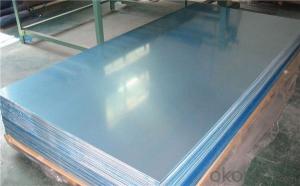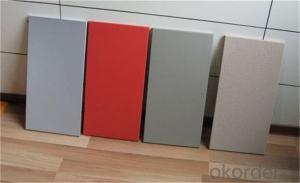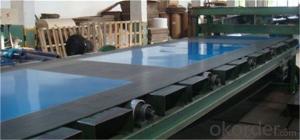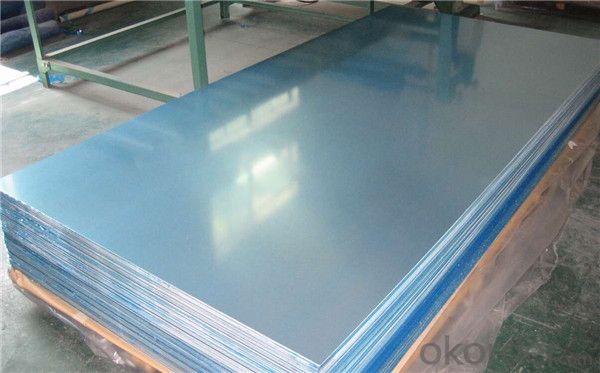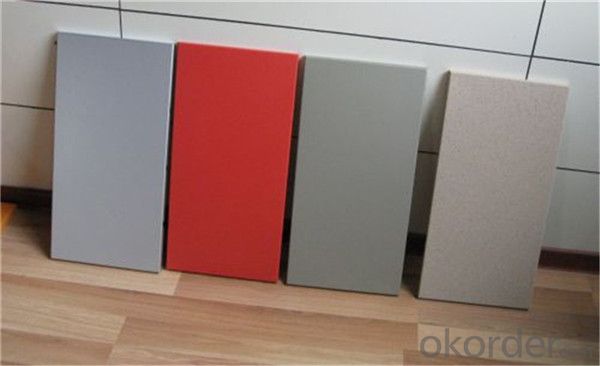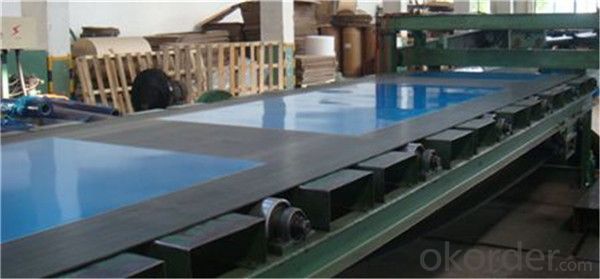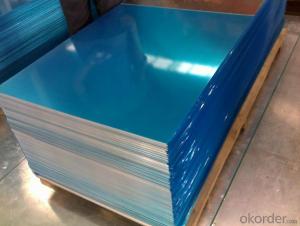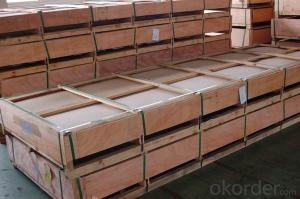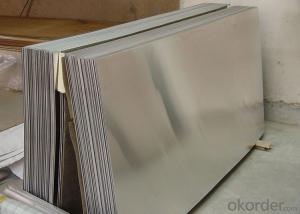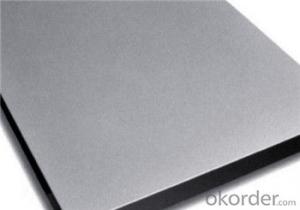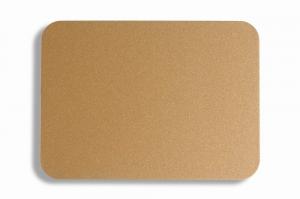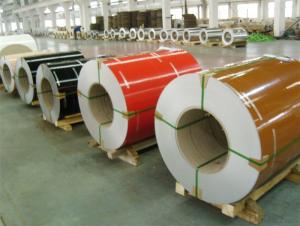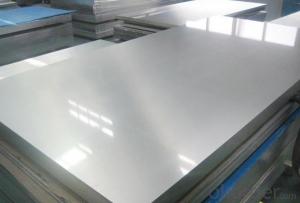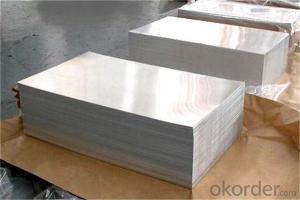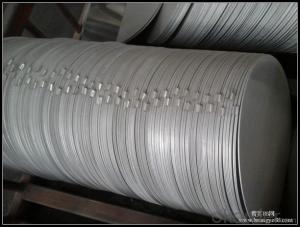030 White Aluminum Sheets - China High Quality Roofing PE PVD Colour Coated Aluminium Sheet
- Loading Port:
- Shanghai
- Payment Terms:
- TT OR LC
- Min Order Qty:
- 5 m.t.
- Supply Capability:
- 100000 m.t./month
OKorder Service Pledge
OKorder Financial Service
You Might Also Like
Specification
Packaging & Delivery
Packaging Details: | Standard export packing or following customer's demand |
Delivery Detail: | Within 20-25days or according to the order quantity |
High Quality and Factory Price Aluminum Coil
Specifications
Grade
| 1000 Series: 1050 1060 1070 1100 1200 1235 etc. 3000 Series: 3003 3004 3005 3104 3105 3A21 etc. 5000 Series: 5005 5052 5083 5086 5154 5182 5251 5754 etc. 6000 Series: 6061 6063 6082 6A02 etc. 8000 Series: 8006 8011 8079 etc. |
Thickness | 0.05~10mm |
Width | <1600mm< span=""> |
Color | Metallic, Solid, RAL or by customer requirements |
Coating paint: | PVDF(Polyvinylidene Fluoride), PE(Polyester ) |
Coating thickness | as per customer’s request |
Gloss | 10-90%(EN ISO-2813:1994) |
Total coating thick | Polyester18~27micron(EN ISO-2360:1995) PVDF27 ~35micron(EN ISO-2360:1995) |
Coating hardness | 2H |
Protective film | PVC film, Colorless transparent or White-black |
Adhesion | 5B (EN ISO-2409:1994) |
Impact resistance | No cracking and peeling (A.S.T.M D2794-1993) |
Flexibility (T-bend) | 0T- 2T |
Temper | H16, H18, H24, H26, H26 |
Certification | ISO9001:2000, CE, SGS |
Coil's standard diameter | 1100mm |
Inner Diameter | 405mm/505mm |
Coil's standard weight | 2000kgs |
Payment | L/C ,T/T |
Parameter
Product | Alloy | Temper | Thickness | Width | I.D(mm) | Application |
Aluminum Coil/Strip | 1050,1060,1070, 1100,1200,1235, 1145,3003,304, 3105,3A21, 8011 | O H12 H14 H16 H18 H22 H24 H26 | 0.2-8mm | 50-2400mm | 75,150 200,300 400,505 (as customers's request) | construction,decoration, automobile,electronic, machinery,boat construction, aeronatics&astronautics, cookware,packing etc. |
Application:
1) Radiator
2) Condenser
3) Insulation Material
4) Construction
5) Decoration
6) Advertisement and market applications
Photos
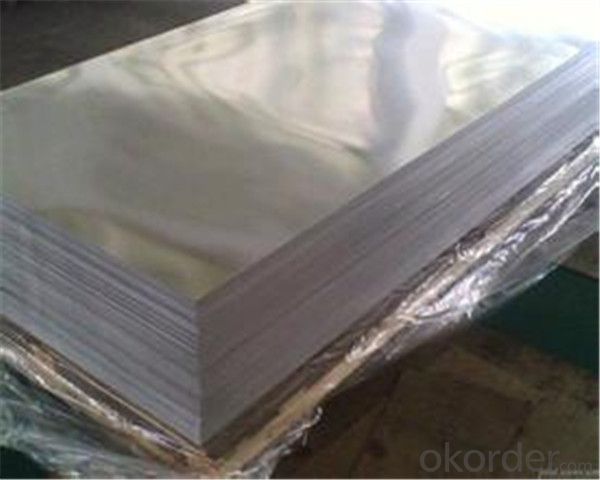
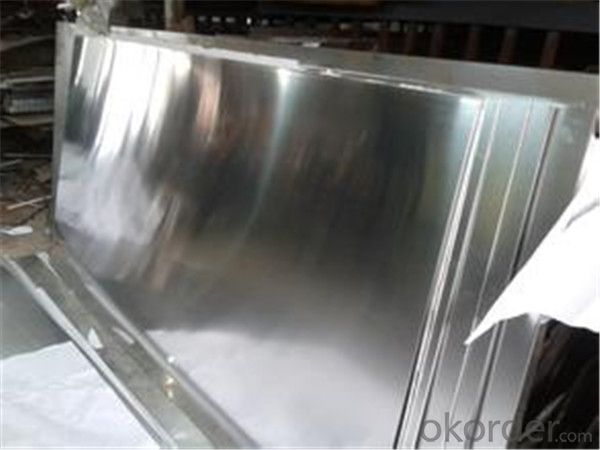
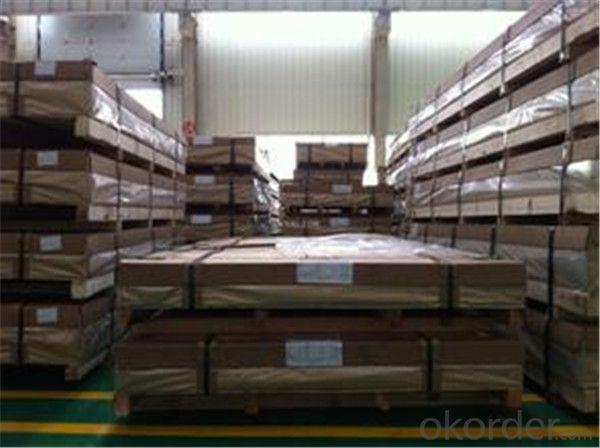
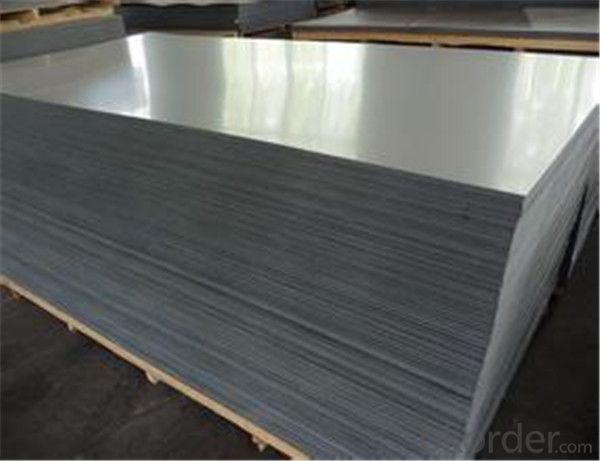
- Q: why is aluminium used instead of copper for high voltage electrical cables????
- Aluminium provies much better conductivity to weight ratio meaning copper is ofcourse the better conductor but it is also a lot heavier than aluminum aluminium is 2.74g/cm? and copper is 8.64 g/cm? soo copper is three times as heavier and if you used that in cables it would be reallly messed up and dangerous and costly as you would need better material or infrastructure to hold the copper wire in air compared to aluminium which is easy to hold in air and is less dense and would be suitable for electrical cables
- Q: What kind of aluminum sheet can be bent with five millimeters?
- The aluminum plate can be bent five milimeter too much, if only bending words and aluminum quality has little relationship.First of all, the state is the most important, the state is divided into hard, semi hard, soft (usually soft called O state)The bending effect of the whole hard is not too far (the aluminum plate is H18, H19, H38 and so on are all hard)Semi hard aluminum sheets can basically be bent (H24, that is, semi hard)O bending is certainly not a problem, but because of too soft, basically with this state to bend lessSecond, you have to choose pure aluminum or alloy aluminum?Pure aluminum hardness is not very good, with 1100, 1050, 1060 and so on can be recommended 1100 H26Alloy aluminum hardness is better, can use 3003, 3005, 5052 and other semi hard state can be.Specific recommendations were then determined by 6061, 2024, 7075 if the hardness is too high, especially for the T6 state is more, should not bend, unless you're heating and folding the difference between aluminum and aluminum is poor oxidation resistance, tolerance, surface effect, crystal accuracy and the uniform stability of a difference, not only the bending effect difference.If the aluminum surface paint it quality do not too good, good is a waste, it is recommended to use 3003-H26, 3005H24 or 5052H34, the price of twenty pieces of it, made up to more than forty yuan per kilogram
- Q: What are the advantages of using aluminum sheets in automotive applications?
- There are several advantages of using aluminum sheets in automotive applications. Firstly, aluminum is a lightweight material, which means that using aluminum sheets can significantly reduce the overall weight of the vehicle. This leads to improved fuel efficiency and lower emissions, which is crucial in today's environmentally conscious society. Secondly, aluminum sheets offer excellent corrosion resistance. Due to its oxide layer, aluminum is highly resistant to rust and other forms of corrosion, making it a durable choice for automotive applications. This ensures that the vehicle maintains its structural integrity and aesthetic appeal over a longer period. Additionally, aluminum has excellent thermal conductivity. This property allows for efficient heat dissipation, making it suitable for applications such as radiators and heat exchangers. By effectively managing heat, aluminum sheets help prevent overheating and extend the lifespan of various vehicle components. Moreover, aluminum is a highly malleable material, which means that it can be easily formed into complex shapes and designs. This versatility allows for greater design flexibility in automotive manufacturing, enabling the creation of sleek and aerodynamic vehicles. Furthermore, aluminum is a recyclable material. With the increasing focus on sustainability, using aluminum sheets in automotive applications aligns with the industry's goal of reducing waste and minimizing environmental impact. The recyclability of aluminum also contributes to a more circular economy, where materials can be reused and repurposed. Lastly, aluminum sheets have excellent strength-to-weight ratio. Despite being lightweight, aluminum is a robust material that offers high strength and durability. This strength allows for the construction of safe and reliable vehicles that can withstand various road conditions and potential impacts. In conclusion, the advantages of using aluminum sheets in automotive applications include weight reduction, corrosion resistance, thermal conductivity, design flexibility, recyclability, and a high strength-to-weight ratio. These benefits contribute to improved fuel efficiency, durability, safety, and environmental sustainability in the automotive industry.
- Q: What are the different methods for bending aluminum sheets?
- Depending on the desired outcome and available equipment, there are various techniques for bending aluminum sheets. The following are some commonly used methods: 1. Manual Bending: For smaller projects, the aluminum sheet can be manually bent using a manual brake or bending tool. This can be achieved by hand with the assistance of clamps or a simple bending tool. 2. Press Brake: In industrial settings or for larger-scale projects, a press brake machine is utilized. It applies significant force through a punch and die set to create precise and consistent bends. 3. Roll Bending: To achieve long, continuous bends or curves, the aluminum sheet is passed through a series of rollers in the roll bending method. This technique is commonly employed in the production of cylindrical or conical shapes. 4. Rotary Bending: Thin aluminum sheets are effectively bent into curves using rotary bending. This method involves a rotating roller or wheel along the length of the sheet to create smooth and uniform bends. 5. Heat Bending: Thicker aluminum sheets or complex shapes often require heat bending. The sheet is heated to a specific temperature to enhance its malleability before being bent into the desired shape. It is crucial to consider factors such as aluminum thickness and alloy, desired bend angle and radius, and available equipment when choosing the appropriate bending method. Consulting professionals or referring to specific guidelines is recommended for optimal results.
- Q: What is the thermal expansion coefficient of aluminum sheets?
- The thermal expansion coefficient for aluminum sheets measures around 23.1 x 10^-6 per degree Celsius, resulting in a length expansion of 23.1 parts per million for every one-degree Celsius temperature rise. Nevertheless, it's worth noting that this coefficient might slightly differ depending on the exact alloy and manufacturing technique employed in the production of the aluminum sheet.
- Q: Can aluminum sheets be used for storage tanks?
- Yes, aluminum sheets can be used for storage tanks. Aluminum is a lightweight, corrosion-resistant material that is commonly used in various industries, including storage tank manufacturing. It offers durability, excellent thermal conductivity, and is easily formable, making it suitable for storing various liquids and gases.
- Q: What are the different bending techniques for aluminum sheets?
- There are several bending techniques that can be used for aluminum sheets. Some of the most commonly used techniques include: 1. Air bending: In this technique, a punch is used to apply force on the sheet, which causes it to bend along a straight line. The bend angle is determined by the amount of force applied. 2. Bottom bending: This technique involves clamping the sheet between a bottom tool and a die, while a punch is used to apply force on the sheet from the top. The sheet is bent around the die, resulting in a precise and consistent bend angle. 3. Coining: Coining is a technique in which the sheet is bent using a punch and a die, but with significantly higher force applied compared to other bending techniques. This creates a crisp and sharp bend with minimal springback. 4. Rotary bending: In rotary bending, the sheet is bent around a rotating bending roll. The roll exerts pressure on the sheet, causing it to bend gradually and smoothly. 5. Roll bending: This technique involves passing the aluminum sheet through a series of rollers, which gradually bend the sheet to the desired shape. It is often used for bending large sheets or for creating cylindrical shapes. 6. Press braking: Press braking is a versatile technique that uses a press brake machine to bend the sheet. The machine consists of a punch, a die, and a back gauge, which allows for precise and repeatable bends. Each bending technique has its own advantages and limitations, and the choice of technique depends on factors such as the desired bend angle, the thickness of the sheet, and the overall shape of the final product. It is important to carefully select the appropriate bending technique to ensure the desired result and avoid any defects or damage to the aluminum sheet.
- Q: Can the aluminum sheets be used for manufacturing aircraft landing gears?
- Indeed, the utilization of aluminum sheets is viable for the production of aircraft landing gears. Aluminum stands as a widely chosen substance within the aerospace field due to its beneficial attributes, namely its lightweight yet robust composition, exceptional resistance against corrosion, and commendable fatigue performance. These characteristics render aluminum sheets apt for the manufacturing of diverse aircraft components, including landing gears. The integration of aluminum into landing gears plays a pivotal role in diminishing the overall weight of the aircraft, a crucial aspect for optimizing fuel efficiency and overall performance. Moreover, aluminum boasts the capability to be effortlessly shaped, welded, and machined, thereby facilitating the creation of intricate forms and designs indispensable for landing gears.
- Q: Can aluminum sheets be used for heat exchangers?
- Yes, aluminum sheets can be used for heat exchangers. Aluminum is widely used in heat exchangers due to its excellent thermal conductivity and corrosion resistance properties. Its lightweight nature also makes it a preferred choice for efficient heat transfer in various applications.
- Q: Are aluminum sheets suitable for use in HVAC (heating, ventilation, and air conditioning) systems?
- Yes, aluminum sheets are suitable for use in HVAC systems. They offer several advantages such as high thermal conductivity, corrosion resistance, and lightweight nature, making them ideal for efficient heat transfer and durability in HVAC applications.
Send your message to us
030 White Aluminum Sheets - China High Quality Roofing PE PVD Colour Coated Aluminium Sheet
- Loading Port:
- Shanghai
- Payment Terms:
- TT OR LC
- Min Order Qty:
- 5 m.t.
- Supply Capability:
- 100000 m.t./month
OKorder Service Pledge
OKorder Financial Service
Similar products
Hot products
Hot Searches
Related keywords
